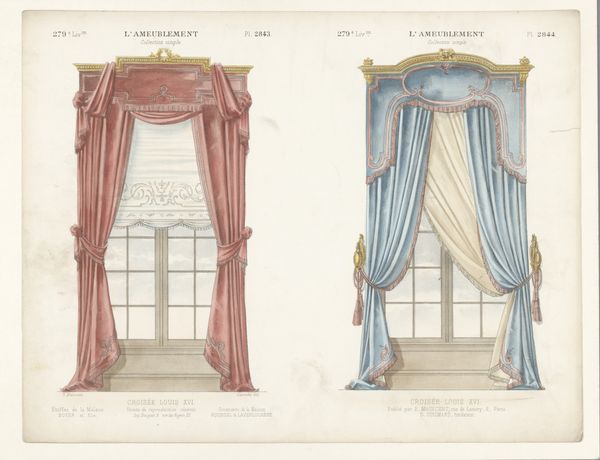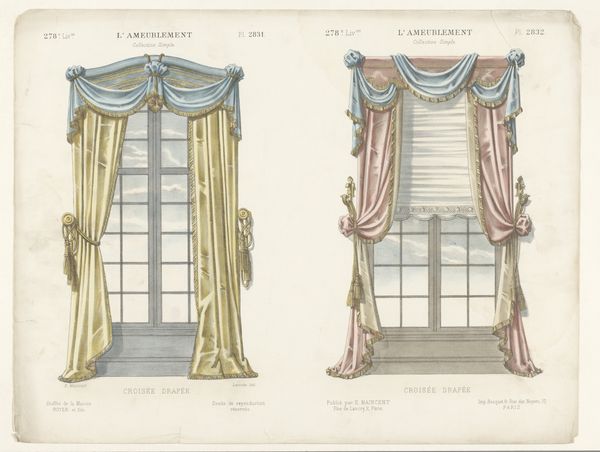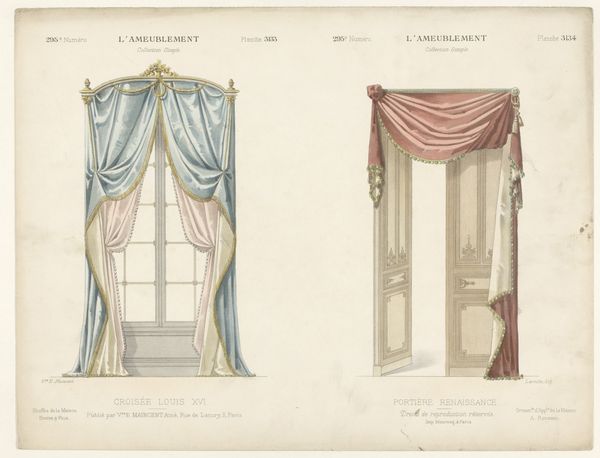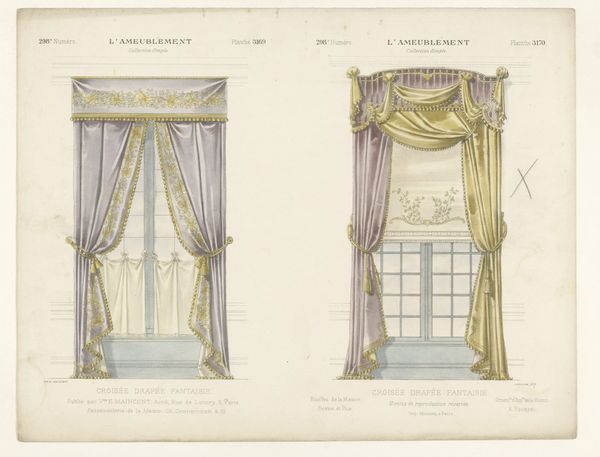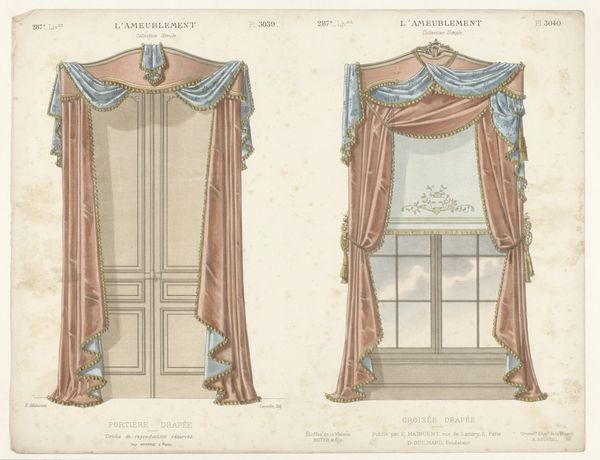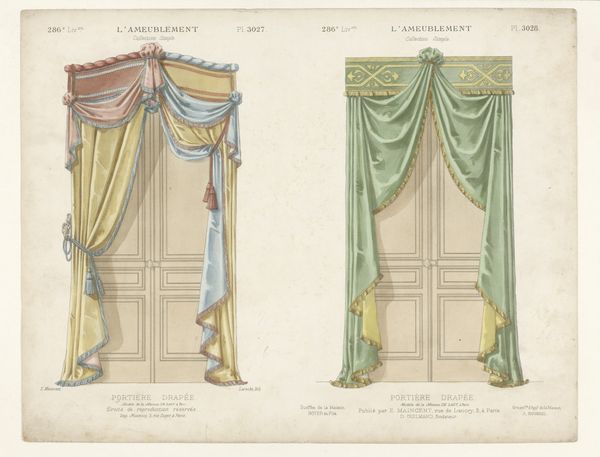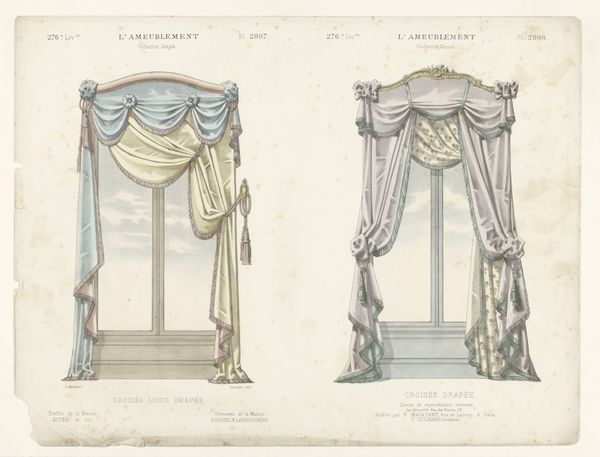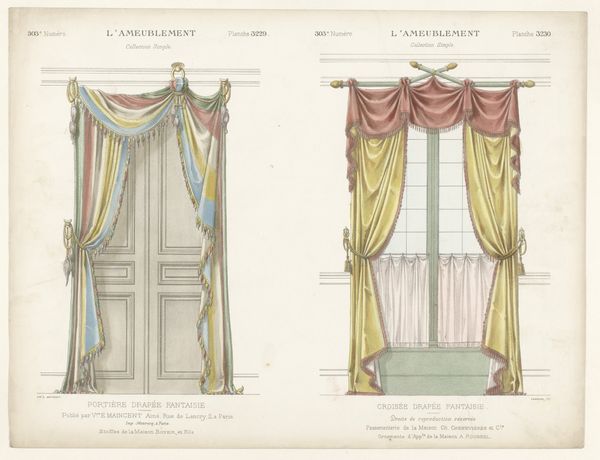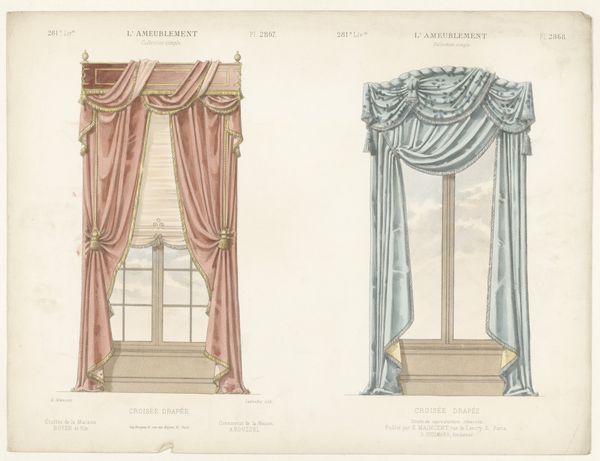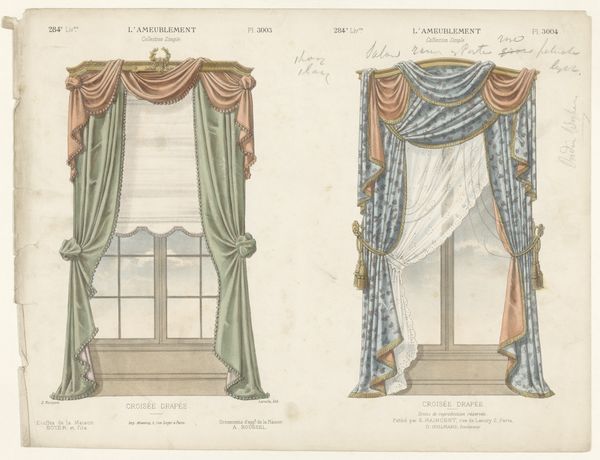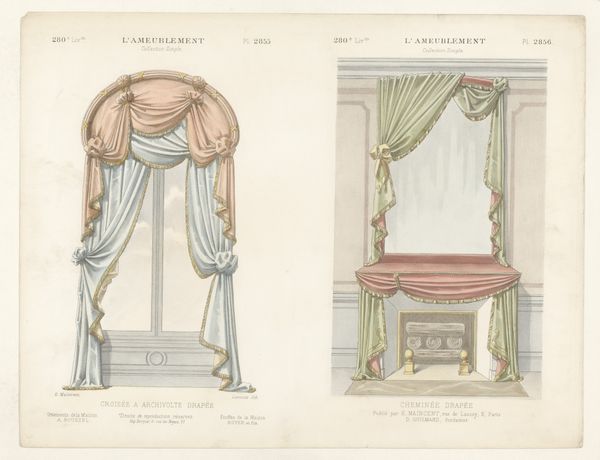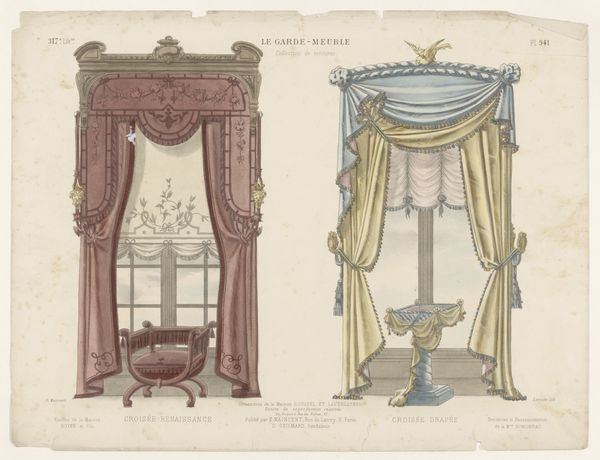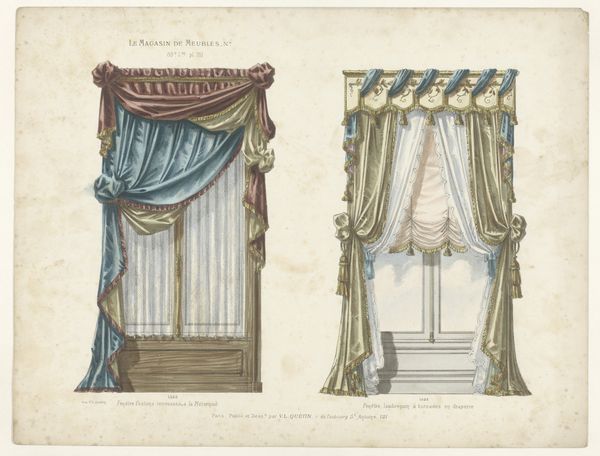
Dimensions: height 275 mm, width 359 mm
Copyright: Rijks Museum: Open Domain
Curator: These are “Twee vensters met gordijnen,” or "Two Windows with Curtains," a print and watercolor work by Léon Laroche, dating between 1885 and 1895. What's your immediate impression? Editor: Light, airy… and definitely more about artifice than function. I am struck by the colors. The hues, those faded roses and barely-there blues, whisper elegance and fragility. It’s like capturing a fleeting dream. Curator: The artist presents a product, a luxury item. Look closely—it is meant for commercial purposes, almost like a page from a catalog. What social sphere is being served by such intricate window dressings? Who had the luxury to buy them? Editor: But look at the details—the careful rendering of light on the fabric, the delicate pleats. This level of attention elevates it. This is more than just advertising. Curator: Is it? Or is that the capitalist spell? It appears decorative-art, which exists because of mass production, marketing, the rise of department stores... This romantic style only existed for a certain privileged few. Editor: Perhaps. Still, the composition creates a certain aesthetic harmony. Notice how the artist used the window frame itself to divide the space and guide the eye? Curator: Consider, though, what 'harmony' is masking. The process behind this image most likely included workshops filled with laborers churning out these goods. Who actually crafted those tassels and stitched the lining? This is a fantasy divorced from its means of production. Editor: I cannot help but respond to the aesthetic presence here. What appears absent is of far greater aesthetic and historic importance to me; not the labour conditions to produce those textiles, rather what does not meet the eye beyond those very textiles through a glass pane. What stories might lay within or beyond these windows. It sets a tone more akin to literature for me. Curator: In the end, these watercolors remind us how art can reflect and perpetuate the social and economic forces of its time. Editor: True, yet the piece persists, continuing a dialogue long after the drawing stops, reminding us that beauty is both universal and deeply, historically bound.
Comments
No comments
Be the first to comment and join the conversation on the ultimate creative platform.
